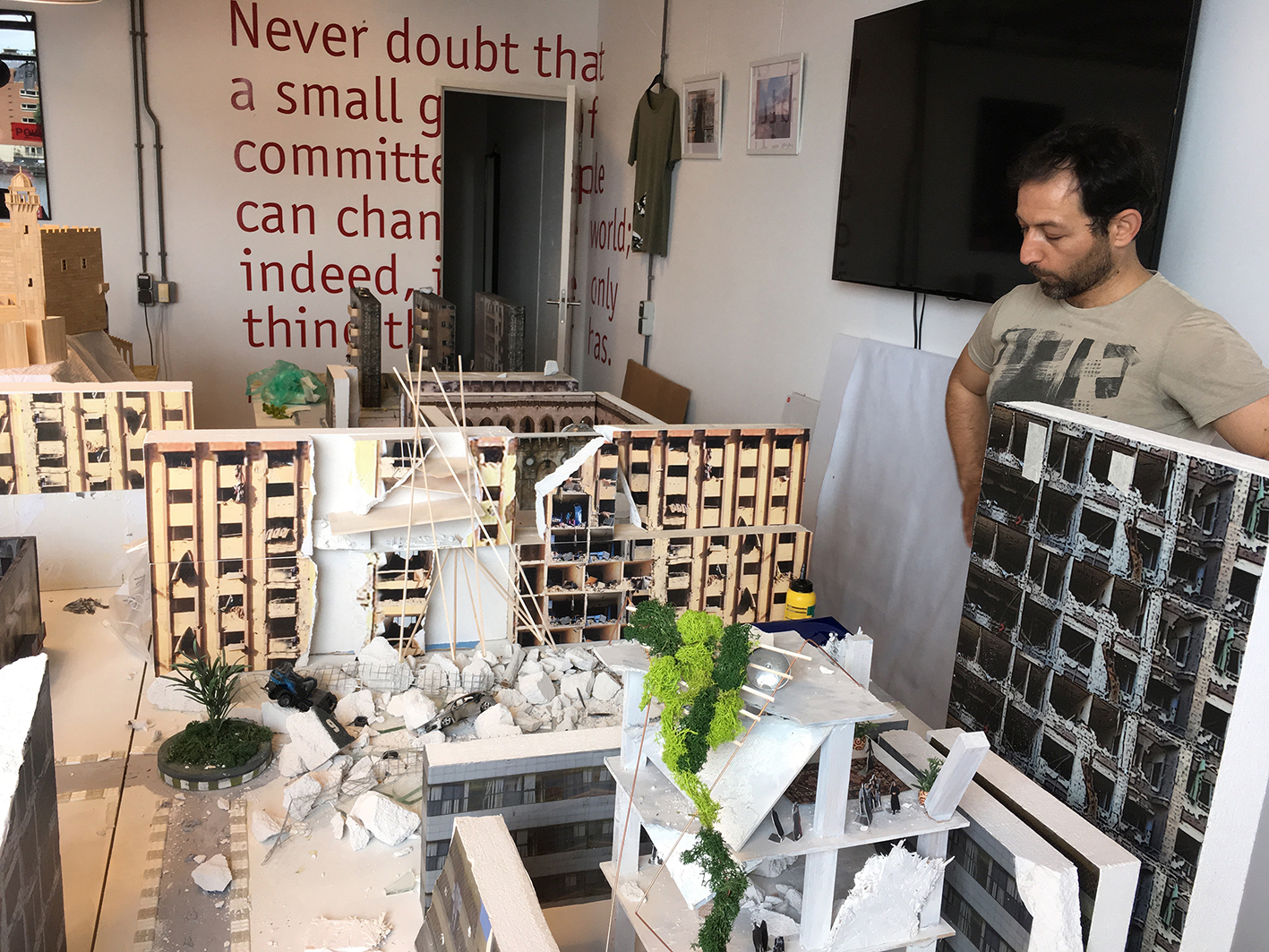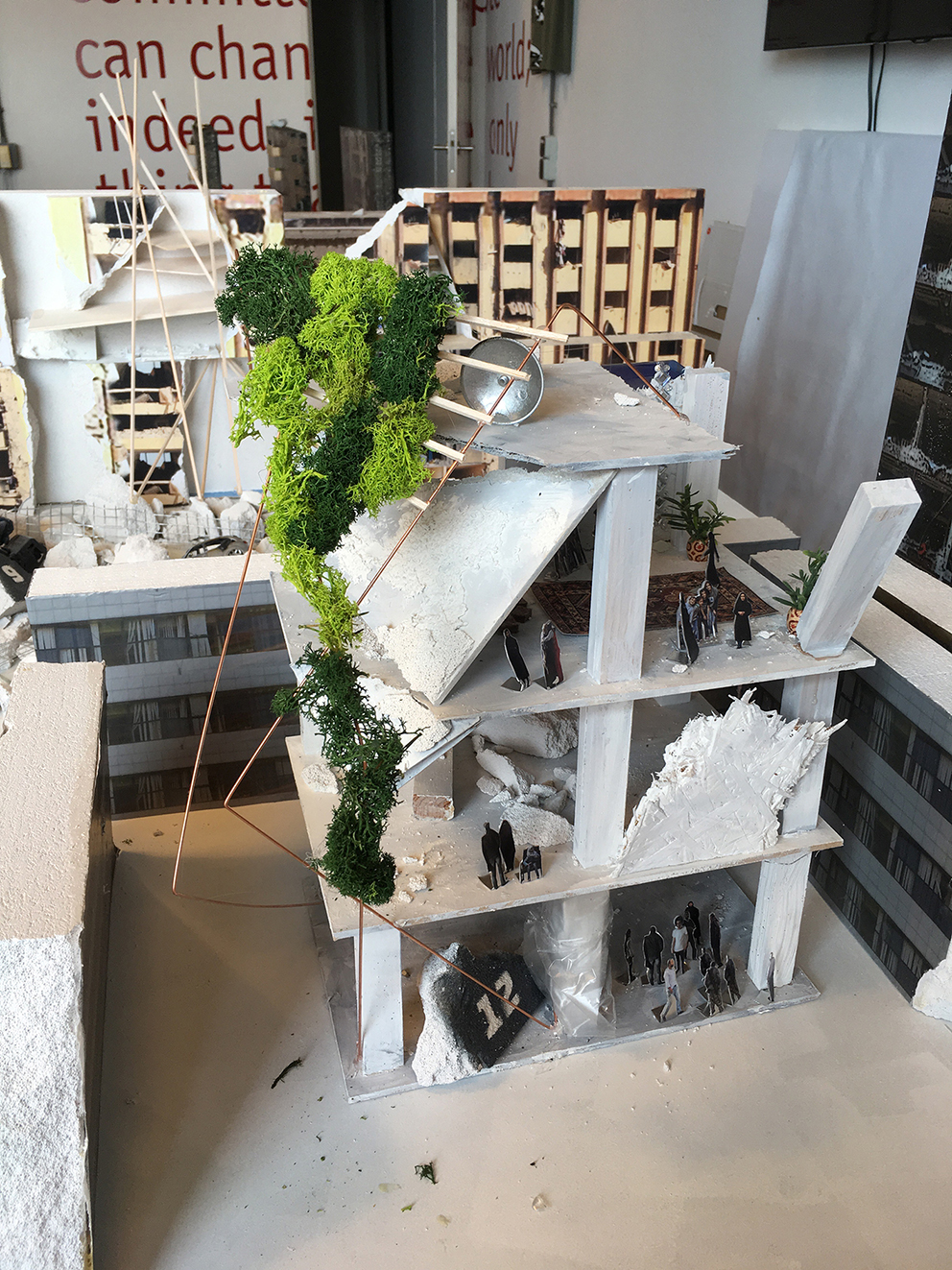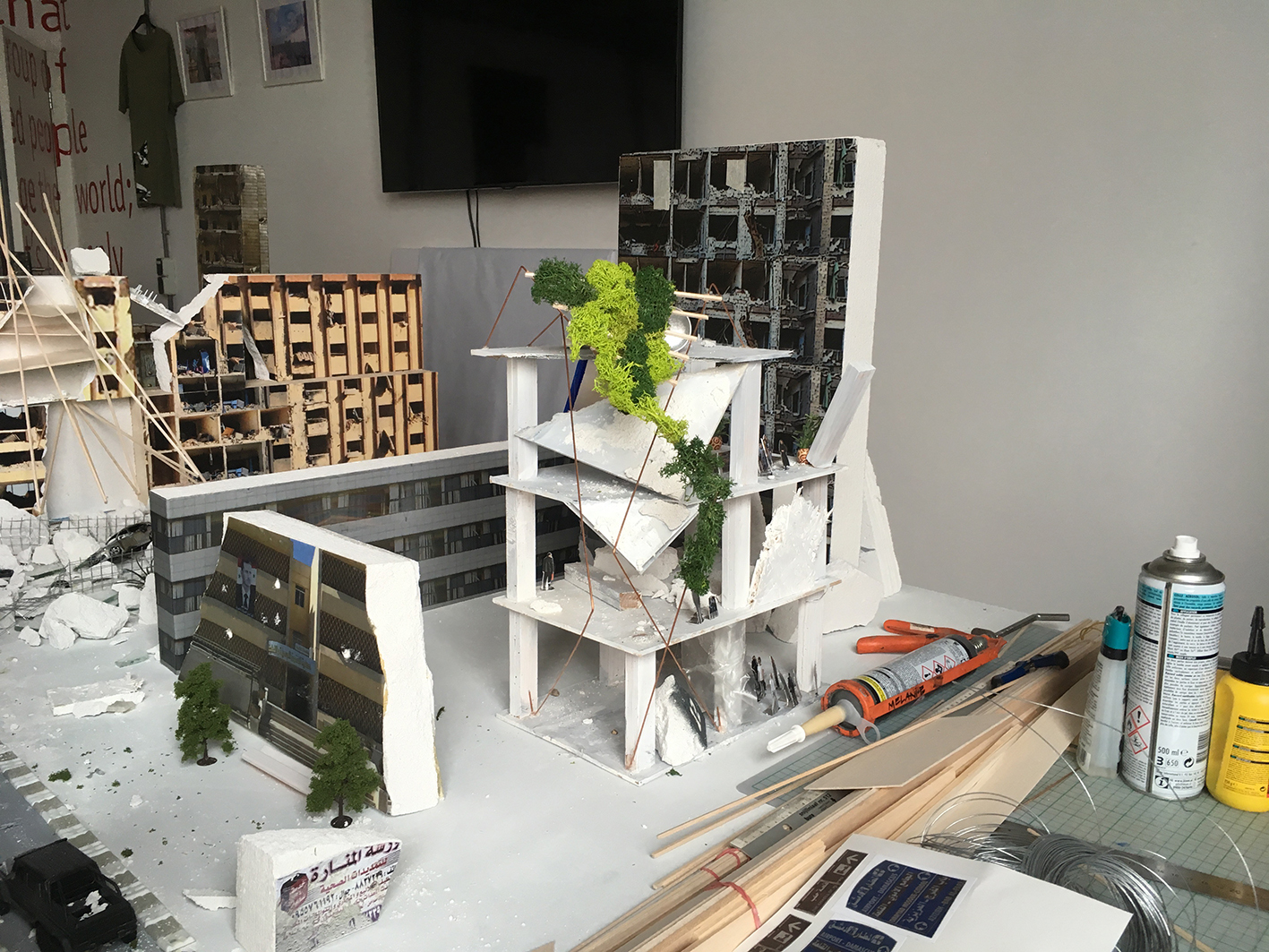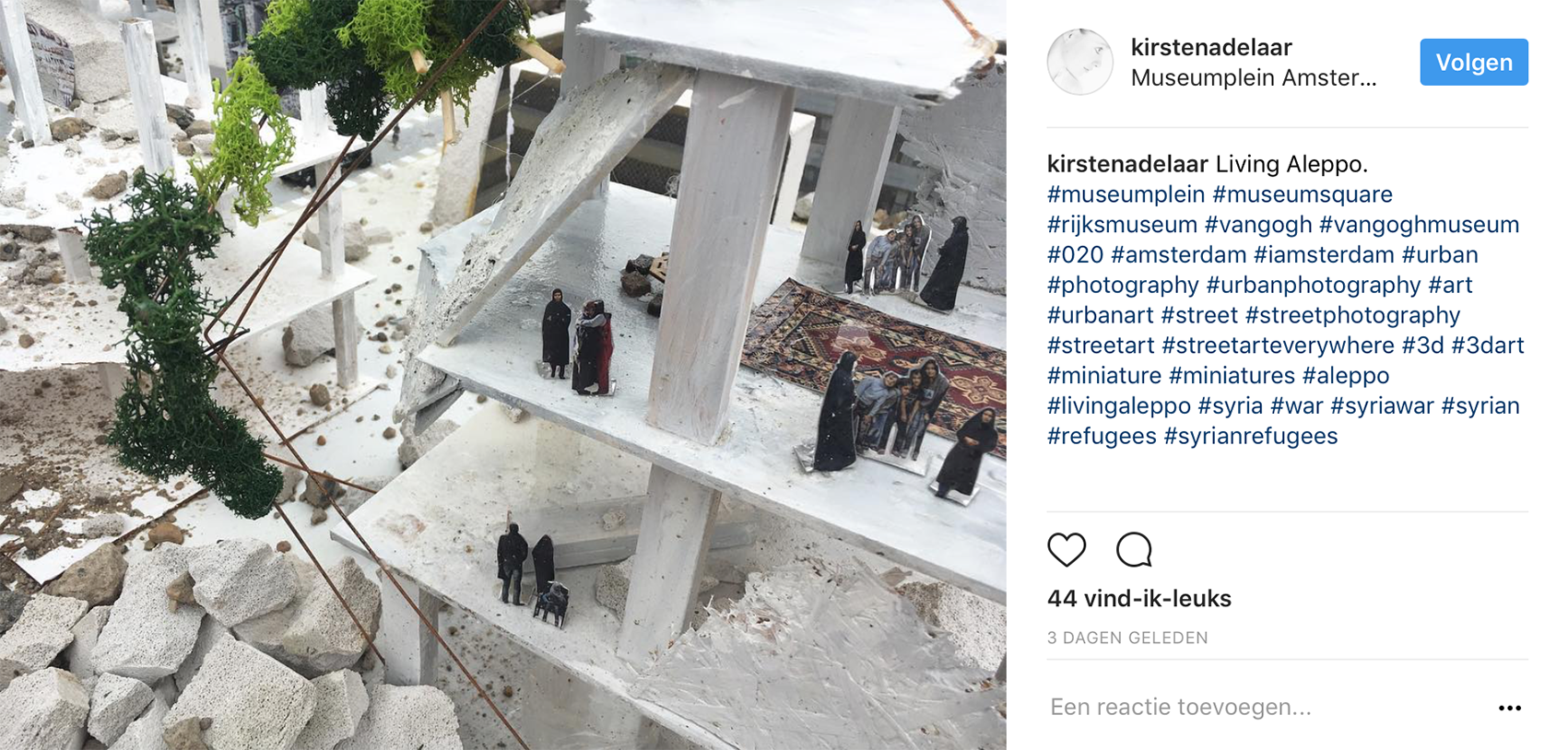The Soul of the City
A city is more than a constructed surrounding or a gathering of build spaces. To describe a place, often we try to capture an atmosphere; a place is soulless or soul-full; we talk of the ‘heart’, ‘life’ of a city and that it has ‘spirit’ or that it ‘breathes’. Cities are living organisms and therefor easily use emotive language to describe places, which makes the city primarily an emotional experience. We approach it as a living entity and almost ‘humanize’ cities.
What is it, this ‘soul of a city’ that we can feel, hear, smell, what we experience as unconscious part of our (emotional) life and memories? What makes this common city-culture a personality which citizens share? Being an Amsterdammer or a Damascino can give a stronger feeling of mutual connection than a national identity, sometimes even more narrowed down to the scale of neighborhoods or ‘the place down hill’. Interesting is, that a city can carry many identities as a whole, the cultural differences between people can commonly live together as being an Amsterdammer.

That this mutual connection functions different in a city context than a national context (or continent) might come from studies proven strong links between place-identity and place-attachment as a person’s individual development in his direct living surroundings.
Eventually, the soul of the city doesn’t only come to existence by the developing culture of the inhabitants. However, the makers of the city such as politicians, planners and architects are implementing their visions in a physical sense, lasting for often a large time span. Connecting to depression of welfare, political disorder, a dictatorial regime or a technocratic decision for a New Town; the interaction between the makers and the inhabitants develops into an intangible flux. Hillman suggests, for instance, that depression or anxiety resulting from a lack of intimacy in formative parental relationships might be mirrored by planners, designers, architects or property developers creating cityscapes that lack that sense of intimacy and connection with its citizens, leading them to feel similarly insecure.
After destruction, the stress releases and is radically and quickly influencing the soul of the city. As described the link in place identity and place attachment, ‘Peace Psychologists who noticed, while supporting negotiations in disputed territories, that if basic human psychological needs were not made then a solution was less likely. By transferring the processes of psychology from people to cities, seeing them almost as if they were a person provides a fresh outlook and can place complex issues into a more understandable human perspective.
This thinking leaves the importance of more traditional urban policy intact but adds an extra insight by taking us into a landscape of feeling and emotion, humanizing urban policy in a way which could have practical uses. And yet, when a city experienced the trauma of war and destruction, as much as the people whom once shaped the soul of the city, scattered all over the globe, and transported from one place to another, sometimes even tabbed in the past, or disconnected to it, how do we find the soul of the city again, and where to search for?
Sometimes this soul can partly brought back, as architect and planner Jos Van Eldonk explained in short after his design for the master plan for Plein 44 in the old center of Nijmegen, which was destroyed in the Second World War and rebuilt shortly after. In their plan of rebuilding the old center, Nijmegen seemed to succeed in their decision to use the room of destruction for new, modern development, taking in account the old habits, building traditions and aesthetics due an intensive research and conversations with inhabitants. As he told me: ‘an old man approached me, saying: thank you, you brought me back my city, my old memories.’ This might be the most reward an architect could ever get.
So the intangible heritage which is encircled and interwoven through in people's stories and everyday practices - we do not need to forget the wound which caused by the act of destruction. Our shared wounds can bond us together- but sometimes that the wounds of displacement, or war and loss can also contain a great deal of shame and guilt. We shouldn’t be naïve to imagine that finding the soul of the city starts with the healing process traumas and wounds, both people and buildings, and therefore the bond can be based in a common interest to heal ourselves and our cities.
The city as a living organism with a soul and a fluid form and continues changing social and cultural structure is not yet common, especially in the context of destruction and war, which have impact on the soul of the city more than the physical appearance of the city.
The tasks for architects and urban designers is more complex than ever, especially when they are working with changing memories, stories, emotions, and wounds, which is in the area of reconstruction unfortunately a meagre researched aspect.
It may be practically easy to remove this aspect in rebuilding physical places because of it complexity, but it is undesirable and impossible to remove and erase the memory of spaces, as well the negative ones. We might as urban designers and architects take advantage of the destruction after war to start from scratch to design new places, but it will be very difficult to find enough human effort to try to investigate and learn the story and history of the new place, which most of the time has the enormous risk to become soulless.
Taking that in account we should take the soul of the city as a starting point to rebuild where taking the damaged in account, with all the memories and stories and emotions it ever caused, giving place to wounds and traumas. Because of the fluid and ever changing form of the soul, we as planners and architects should work with more disciplines such as anthropologists, historians and psychologists.
A rebuild place is not only suitable to re-live through the physicality of the appearance, but must give room for (new) memories and should be freely interpretable. This means that we must pass the authority of our architectural field in the sense of dictation our visions or patronizing in the design, but make room for less tangible senses such as hearing, smell and touch.
Besides, it is necessary to take the natural time factor into account, the time-rings of the city, because the design predicts the success of a potential project, but it certainly will fail if it does not take account of everything that is obvious or less obvious from the soul of the place, from The Soul of the City.
Short Bio
Bengin Dawod is an architect and urban designer, born in 1982 and currently practicing in the architectural bureau 'Common Affairs'. And he advices the city of Amsterdam on the strategy development of the refugee camp in Jordan, and a co-founder of Ondertussen. He initiated the Soul of the City project which is focused on the reconstruction of post conflict cities. Which asks beyond current practices and involves a wider set of disciplines then professionally trained architects and urban planners. In who might understand through their collaboration the invisible layers of the city?
Bengin in this installation is more provoking with his work the new way of thinking regarding the rebuilding of post conflict cities, and more challenging architects and urban designers for a new principle which must create the new form from the damaged one.



